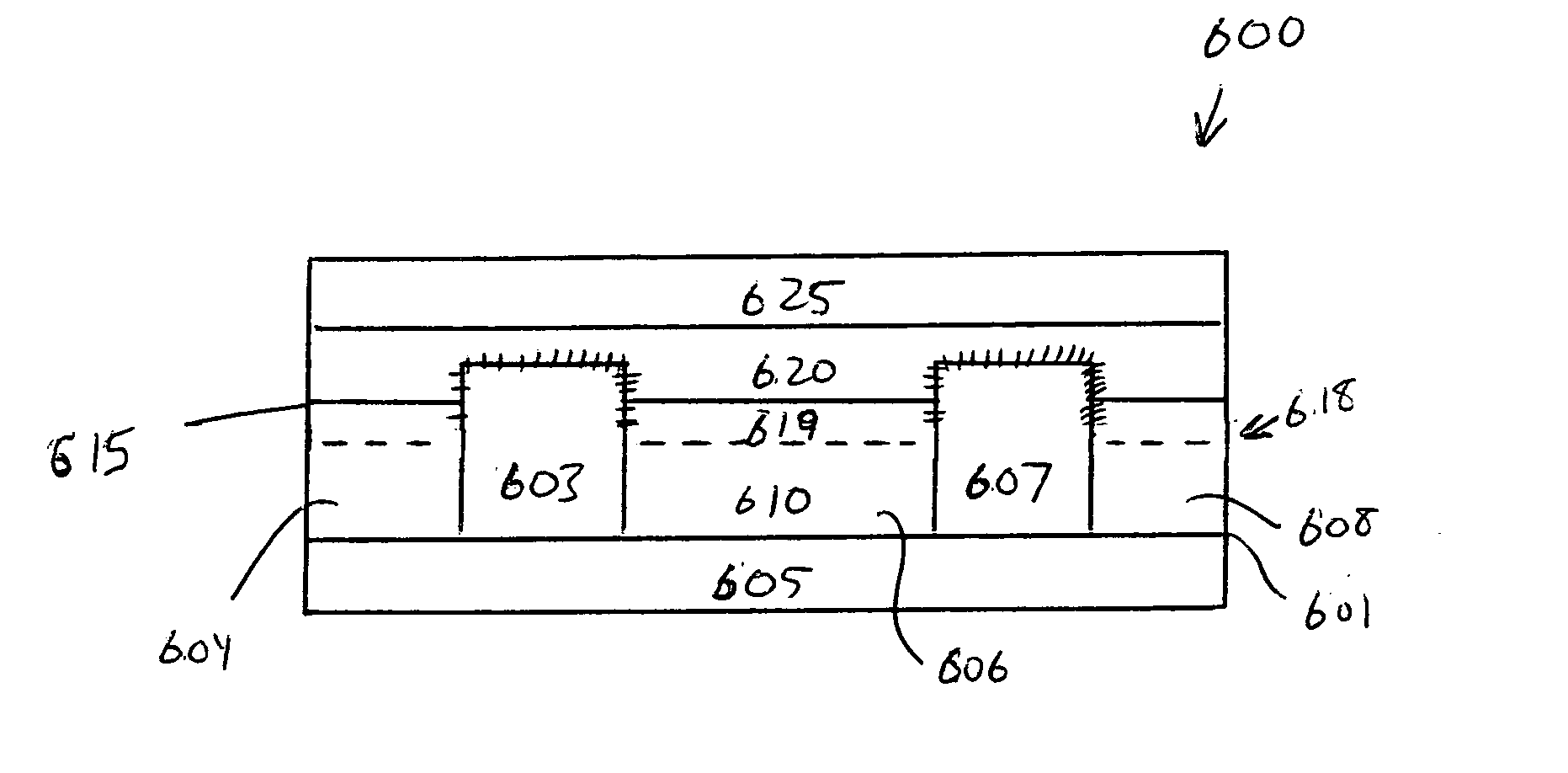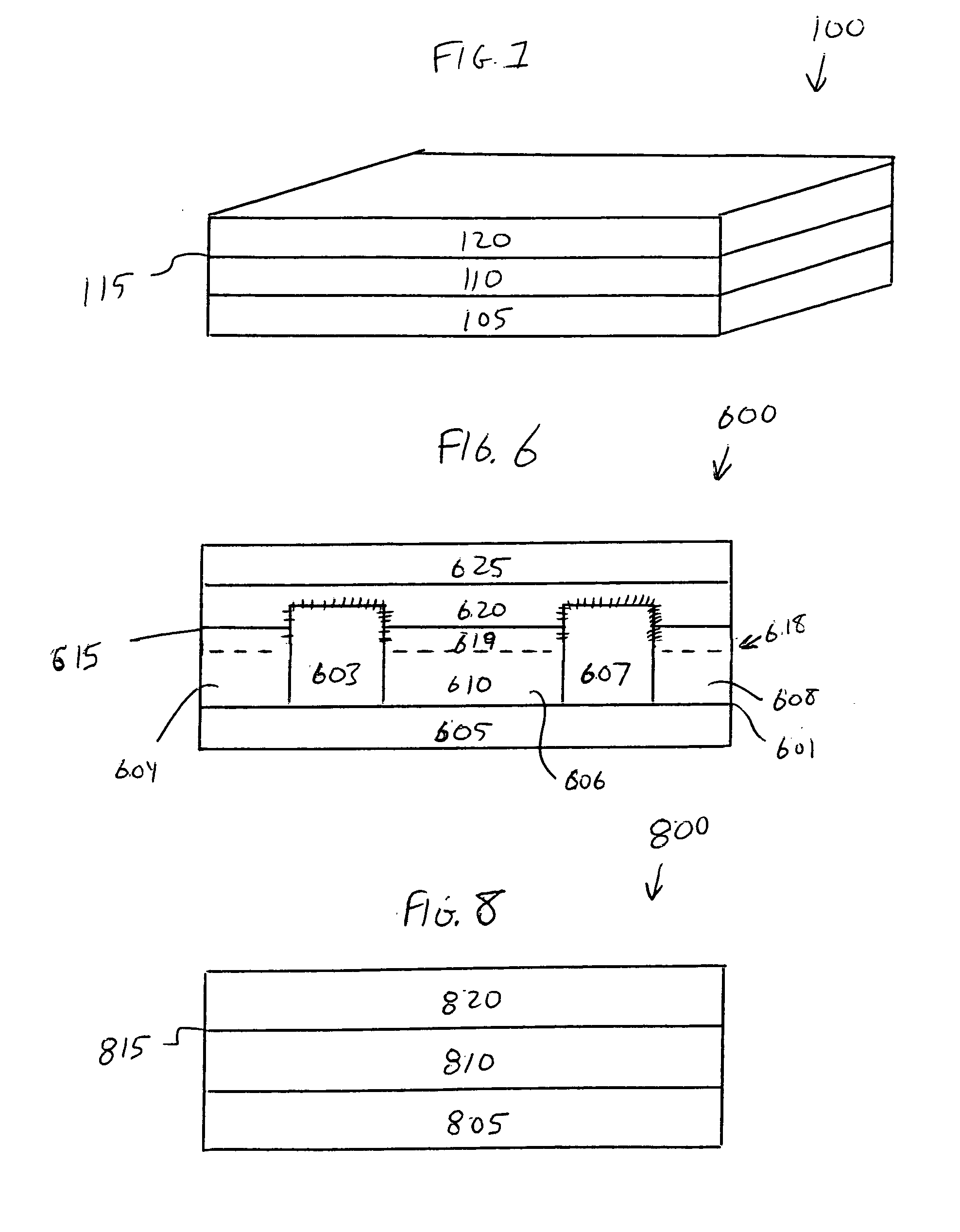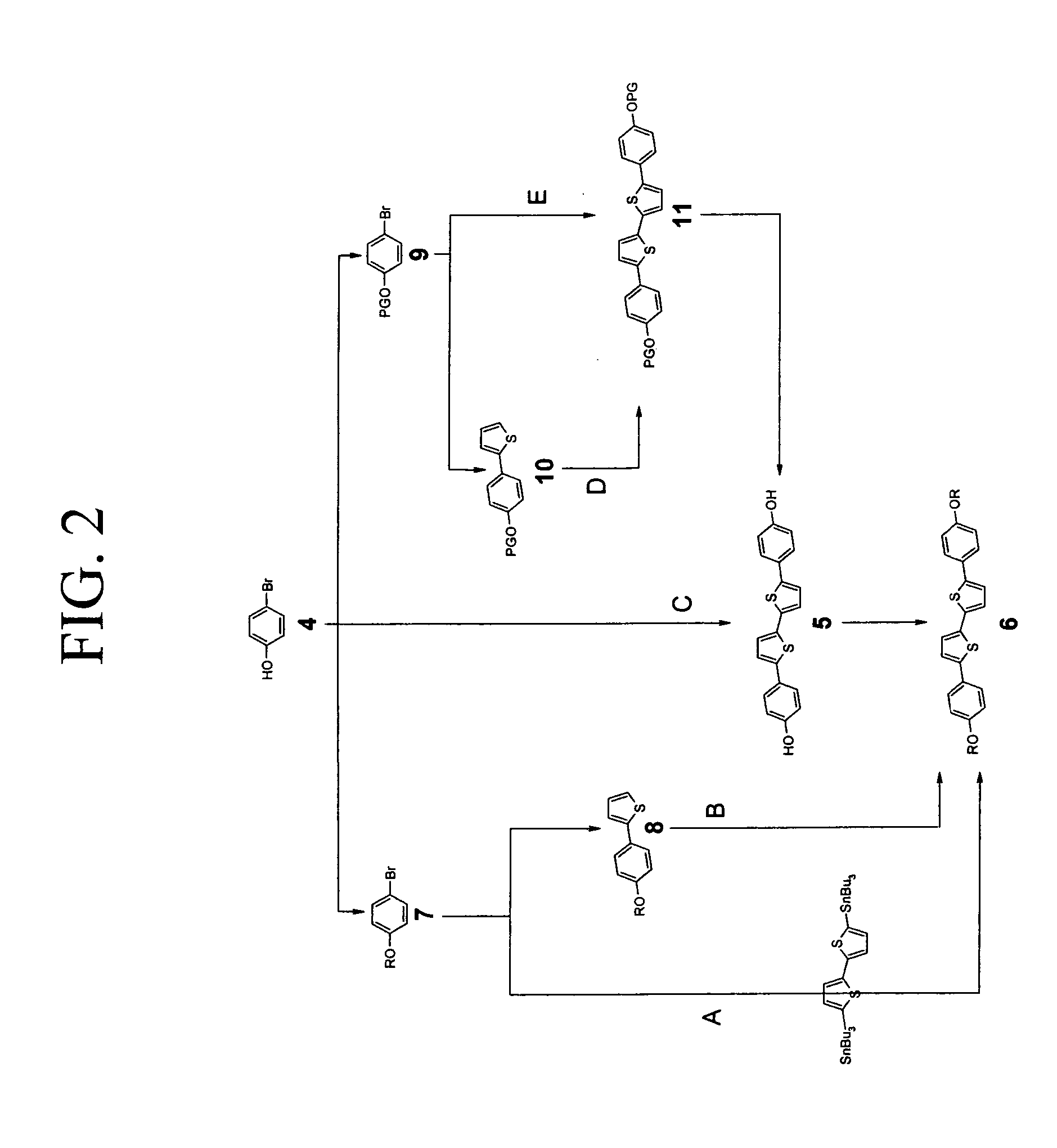Liquid phase fabrication of active devices including organic semiconductors
a technology of active devices and organic semiconductors, which is applied in the direction of semiconductor devices, basic electric elements, electrical equipment, etc., can solve the problems of inability to achieve uniform organic semiconductor film, difficult to achieve sufficient precision in vaporization process to achieve acceptable organic semiconductor film uniformity, and degradation of organic semiconductor molecules
- Summary
- Abstract
- Description
- Claims
- Application Information
AI Technical Summary
Benefits of technology
Problems solved by technology
Method used
Image
Examples
example 1
[0119] An FET having a structure consistent with that shown in FIG. 6 was fabricated using the process described in connection with FIG. 7. The support body used was a polyethylene naphthalate (“PEN”) polyester foil obtained from DuPont Teijin Films U.S. Limited Partnership, 1 Discovery Drive, P.O. Box 411, Hopewell, Va. 23860 U.S.A., sold under the trade name, Teonex Q 51, attached to a glass slide with scotch tape. The source and drain electrodes were fabricated from polyethylenedioxythiophene (“PEDOT”), offset printed at an average thickness of about 1 micron (“μ”). The channel length, the minimum path distance between the source and drain electrodes, (“L”) was 120 microns. The organic semiconductor composition body used was spin coated from a 5% weight / weight solution in tetrahydrofuran (THF) of 5,5′-bis(4-(1-methylhexyloxy)phenyl)-2,2′-bithiophene (“1-MH-PTTP”), and had an average thickness of about 200 nanometers (“nm”). The organic dielectric composition body was spin coated ...
example 2
[0121] An additional FET was fabricated in the same manner, except that the source and drain electrodes were laser-patterned and a 0.5% weight / weight solution in tetrahydrofuran (THF) of 1-MH-PTTP was used, further including 1% by weight of polystyrene (“PS”) having an average molecular weight of about 2.75×106 grams per mole and a polydispersivity (“PDI”) of about 1.05. The apparent viscosity η of a 10% weight / weight solution of PS in THF is 400 milliPascal seconds (“mPas”) at a shear rate γ of 100 / second (“s”). Accordingly, PS may be used to adjust the rheological properties of the semiconductor printing ink, such as viscosity, surface tension and adhesion. Further information on related additives for organic semiconductor compositions is disclosed in U.S. patent application Ser. No. ______, filed concurrently herewith by Florian Dötz, Ingolf Hennig, and Frauke Richter, and entitled “ORGANIC COMPOSITIONS”, the entirety of which hereby is incorporated herein by reference. The PS-mo...
example 3
[0122] An FET having a structure consistent with that shown in FIG. 6 was fabricated using the process described in connection with FIG. 7. The support body used was a poly(ethyleneterephthalate) (“PET”) foil attached to a glass slide. The source and drain electrodes were fabricated from laser patterned PEDOT, at an average thickness of about 0.3μ. The organic semiconductor composition body used was spin coated from a 3% weight / weight solution in o-xylene of poly(9,9′-dioctylfluorene-co-bithiophene) (“F8T2”), and had an average thickness of about 100 nm. The organic dielectric composition body was spin coated from a 10% weight / weight solution, in perfluorotributylamine, of a CYTOP® perfluoro(1-butenyl vinyl ether) homocyclopolymer commercially available from the Asahi Glass Company (“CYTOP”), having an average thickness of about 1.9μ. The gate electrode was carbon ink painted onto the organic dielectric composition body. The resulting FET was connected into an external circuit. The ...
PUM
 Login to View More
Login to View More Abstract
Description
Claims
Application Information
 Login to View More
Login to View More - R&D
- Intellectual Property
- Life Sciences
- Materials
- Tech Scout
- Unparalleled Data Quality
- Higher Quality Content
- 60% Fewer Hallucinations
Browse by: Latest US Patents, China's latest patents, Technical Efficacy Thesaurus, Application Domain, Technology Topic, Popular Technical Reports.
© 2025 PatSnap. All rights reserved.Legal|Privacy policy|Modern Slavery Act Transparency Statement|Sitemap|About US| Contact US: help@patsnap.com



